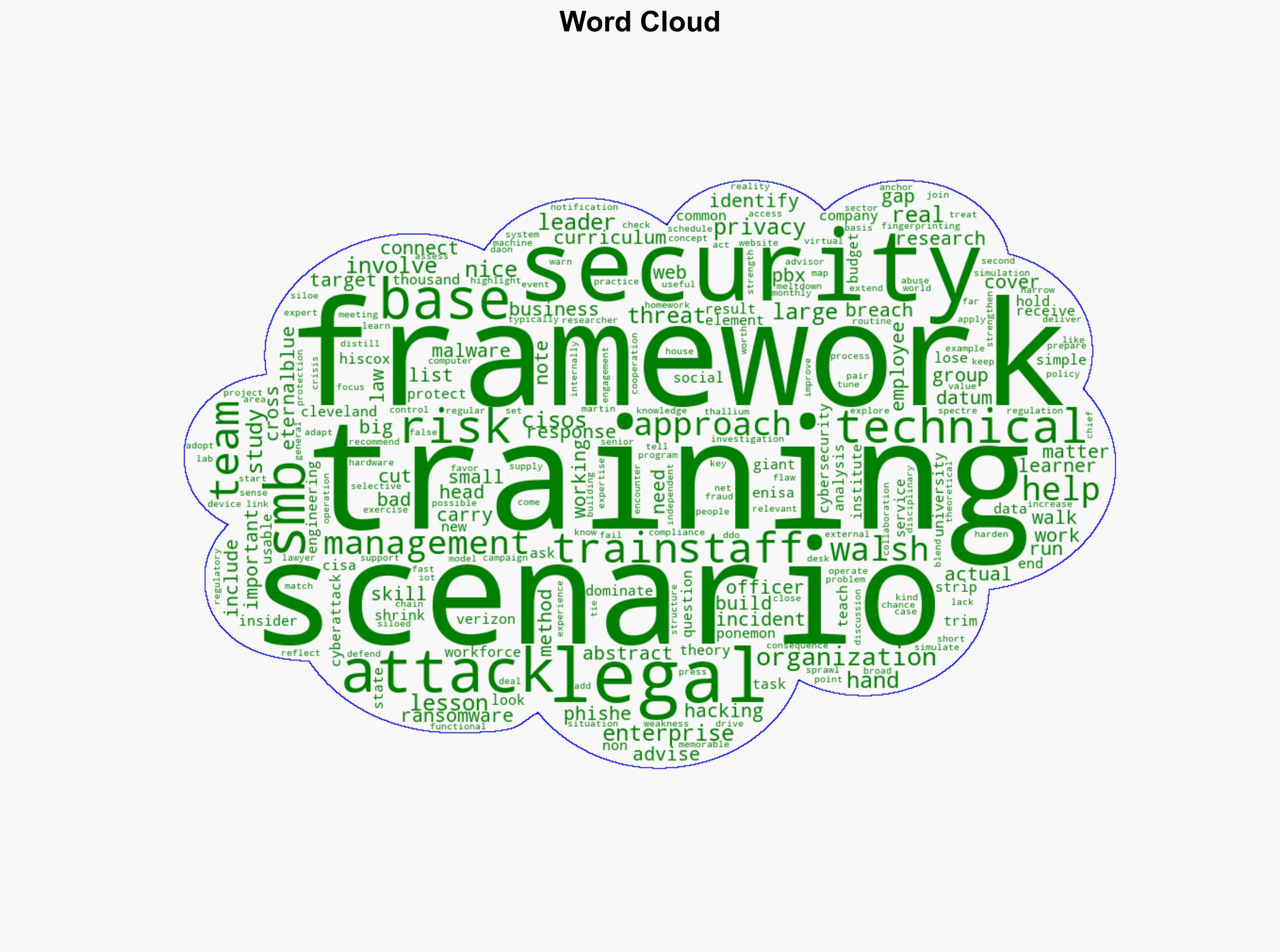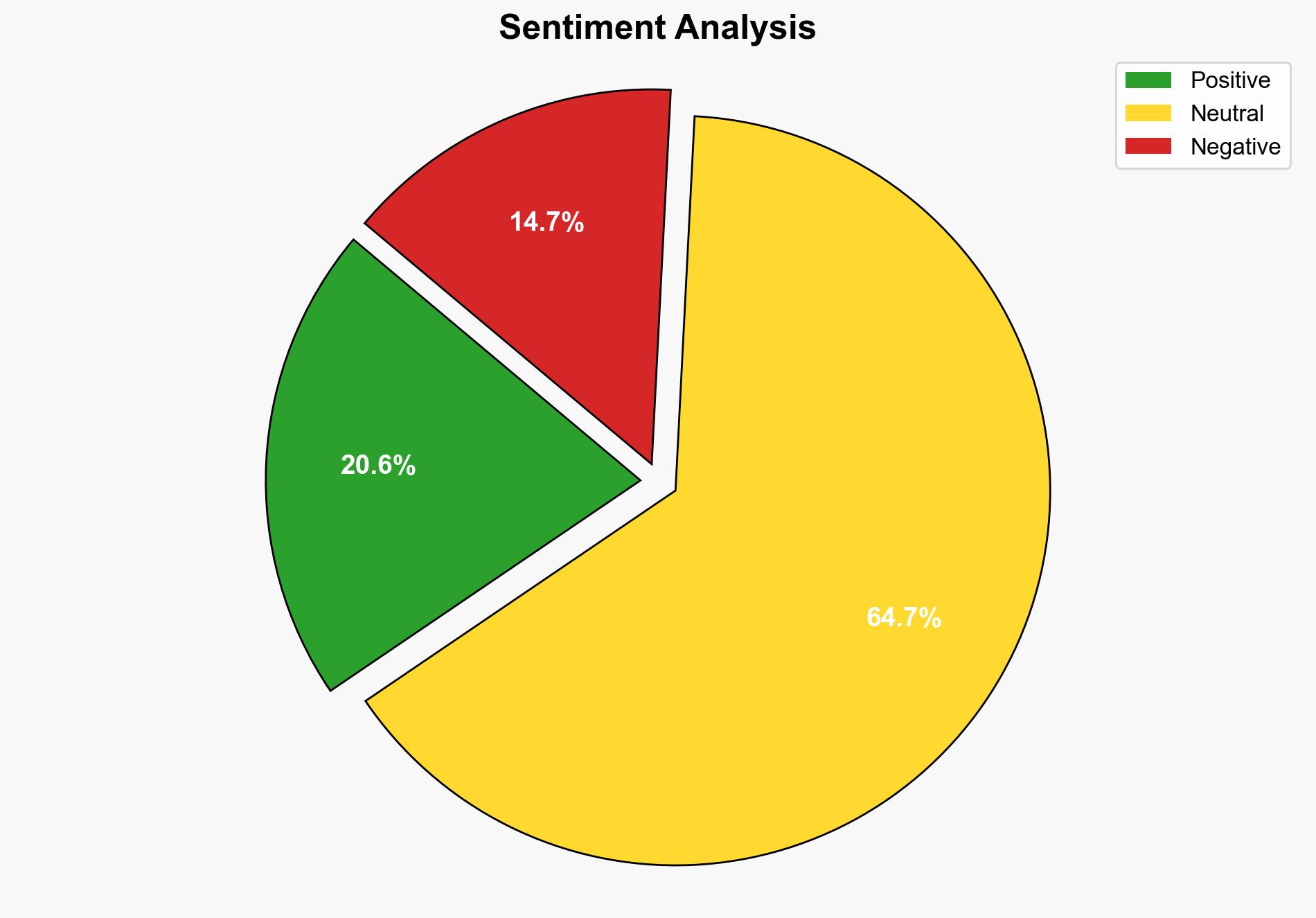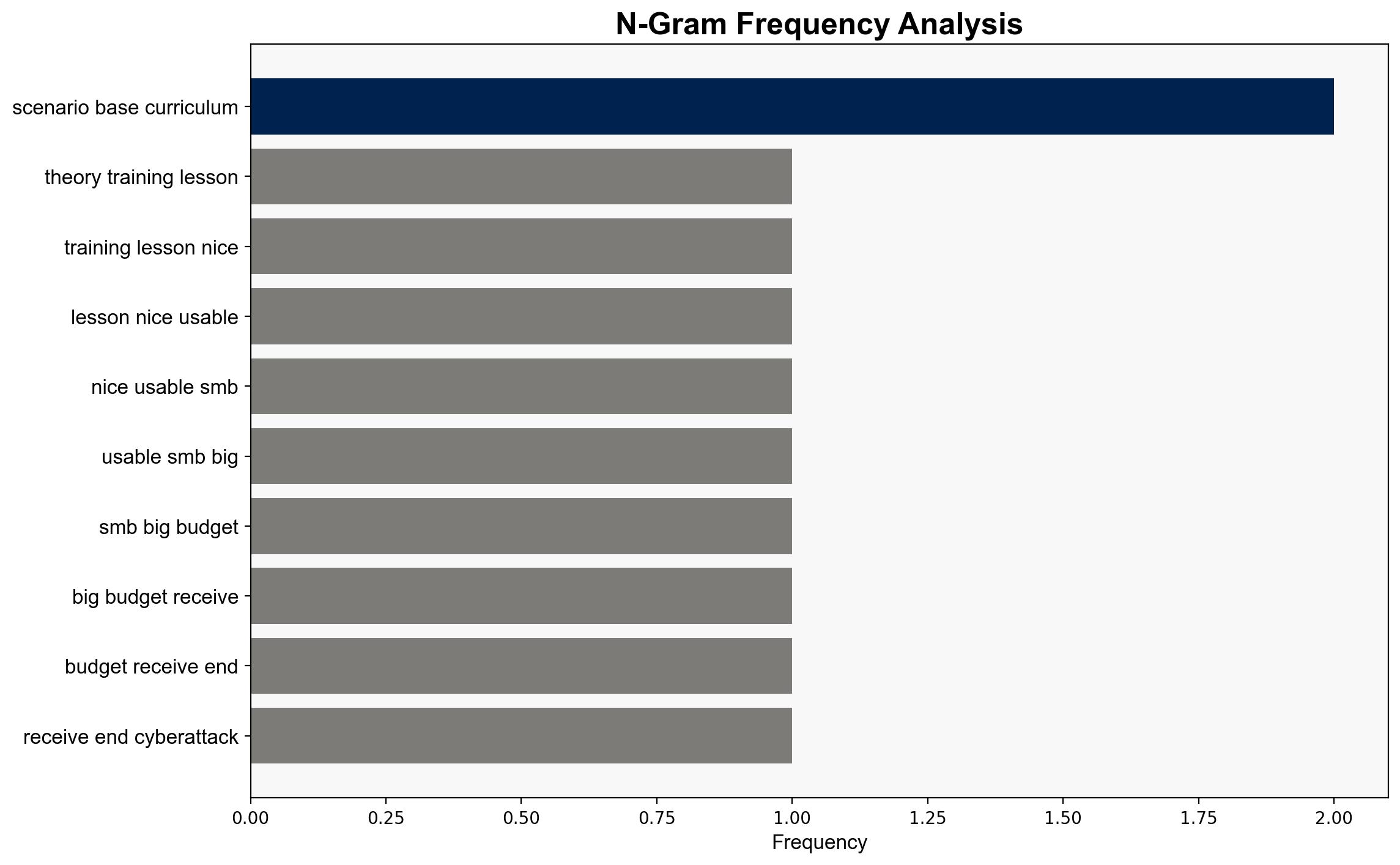From theory to training Lessons in making NICE usable – Help Net Security
Published on: 2025-10-10
Intelligence Report: From theory to training Lessons in making NICE usable – Help Net Security
1. BLUF (Bottom Line Up Front)
The most supported hypothesis is that a streamlined and scenario-based adaptation of the NICE Cybersecurity Workforce Framework is more effective for training small and medium-sized businesses (SMBs) and large enterprises in cybersecurity. Confidence Level: Moderate. It is recommended to implement targeted training programs that integrate legal and technical skills, focusing on real-world scenarios to enhance preparedness and response capabilities.
2. Competing Hypotheses
1. **Hypothesis A**: A comprehensive, scenario-based adaptation of the NICE framework improves cybersecurity training effectiveness for both SMBs and large enterprises by focusing on practical, real-world applications.
2. **Hypothesis B**: The NICE framework, even when streamlined, is too complex and broad for effective implementation in SMBs, leading to inadequate training outcomes and resource wastage.
Using the Analysis of Competing Hypotheses (ACH) 2.0, Hypothesis A is better supported due to evidence of successful scenario-based training outcomes and the integration of cross-disciplinary skills, which align with the needs of both SMBs and large enterprises.
3. Key Assumptions and Red Flags
– **Assumptions**: It is assumed that SMBs and large enterprises have the capacity to integrate scenario-based training and that employees can effectively engage with cross-disciplinary content.
– **Red Flags**: Potential over-reliance on theoretical frameworks without sufficient empirical validation. The assumption that legal and technical integration is universally applicable may not hold in all organizational contexts.
– **Blind Spots**: Lack of consideration for the varying resource availability and expertise levels across different organizations, particularly SMBs.
4. Implications and Strategic Risks
– **Economic**: Ineffective training could lead to increased vulnerability to cyberattacks, resulting in financial losses.
– **Cyber**: Failure to adequately train staff could escalate the frequency and severity of cyber incidents.
– **Geopolitical**: Enhanced cybersecurity training could bolster national security by reducing the attack surface for state-sponsored cyber threats.
– **Psychological**: Improved training may increase employee confidence and organizational resilience, but could also lead to complacency if not regularly updated.
5. Recommendations and Outlook
- Implement scenario-based training programs tailored to the specific needs and risks of organizations, with a focus on integrating legal and technical skills.
- Conduct regular assessments and updates of training programs to ensure alignment with evolving threats and regulatory requirements.
- Best Case: Organizations achieve a high level of preparedness and reduce cyber incident rates.
- Worst Case: Training programs fail to adapt to new threats, leading to increased vulnerability.
- Most Likely: Gradual improvement in cybersecurity posture with ongoing adjustments and refinements to training approaches.
6. Key Individuals and Entities
– Martin Walsh, Chief Legal Officer at Daon
7. Thematic Tags
national security threats, cybersecurity, counter-terrorism, regional focus





